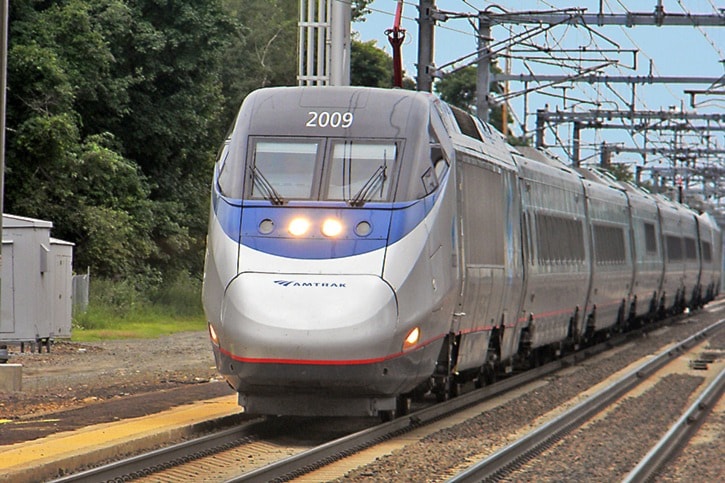Editor:
Re: High-speed rail plan not without its curves, March 8 column.
It was quite amusing to read the epistle from columnist Frank Bucholtz.
The “Grandview cut “ from the present Via Rail/Amtrak station is definitely not an available route.
High-speed trains accelerate from zero to 120 km/h in 60 to 80 seconds, the minimum speed out of a station. The present ‘rail bridge’ has a speed limit of 15 km/h. Why build a new bridge?
The province is building the 10-lane ‘Christy Clark’ bridge replacing the Massey Tunnel. Why not include two rail tracks underneath for trains and light rail, as has been done in many other countries, with the province charging the rail company a user fee?
Passengers change from/to the high-speed trains at the Bridgeport Canada Line station, which would become a new hub, and are within minutes in Downtown Vancouver, Richmond and elsewhere. Passengers to/from Surrey and White Rock connect to light rail travelling at 100 km/h
The line from the Canada/U.S. border south will require quite a few tunnels and viaducts east of the I-5 up to Vernon and then again starting in Mansville.
I have looked at the tracks further south, neither the tracks nor the embedments are capable of handling electrified trains travelling at 250-plus km/h.
Before the U.S. government created Amtrak in the late-’60s, studies showed that people would use a train between two points if the distance was 300 miles or less; train stations were in midtown where the businesses are located and a frequent service with a minimum of one train every two hours between 6:30 a.m. and 7:30 p.m.
The densely populated area and concentration of business in the New York-Philadelphia-Washington corridor meets these criteria.
It would be prudent for the provincial and state governments to ask their minsters/secretaries of transport/secretaries to gather the required data on:
• Total population living within 50 kilometres of the proposed high-speed tracks and stations.
• Percentage of that population in the workforce with frequent requirements to travel.
• Industries in the corridor and destinations of shipments or imports of materials, and forecasted growth in this segment.
• Present number of flights, capacity, utilization and fares between Vancouver, B.C.; Seattle, Wash.; and Portland, Ore.
This is to start with. Once they have these numbers, then they can decide if it’s worth proceeding with the actual planning of a route.
Last May, I invited the B.C. minister of transport to come with me for a week to Europe to see some real-time action after he had informed me that the tracks between Langley and Delta Port were close to capacity with 24 trains per day.
I would have shown him passenger and freight trains on the same tracks in four countries zipping by in intervals of four minutes at speeds of 200 km/h.
In the fall of 2017, a new 190 km/h high-speed section on the main Baltic Sea to Switzerland/Italy north-south route will be inaugurated. It has been planned for 80 passengers and 200 freight trains per day.
Cost: 32 billion Euro.
Wolfgang Schmitz, White Rock
